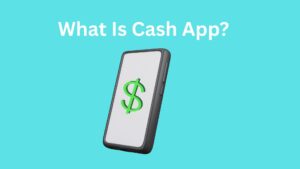Etsy is a legitimate online marketplace that has revolutionized how we shop for unique, handmade, and vintage items. However, with over a million active sellers on the platform, it’s crucial to know how to spot potential scams and ensure safe transactions. Is etsy legit?, Is Etsy safe?, This comprehensive guide will help you understand whether Etsy is legit and safe, how to identify legitimate sellers, and protect yourself against common etsy scams while enjoying all that this creative marketplace has to offer.
What is Etsy and How Does It Work?

Etsy is one of the world’s largest online marketplaces, specializing in unique, handmade, vintage, and craft supplies. Founded in 2005, the platform connects creative entrepreneurs with buyers looking for special items ranging from jewelry to home decor, clothing, art, and much more. Unlike traditional e-commerce sites, Etsy focuses on unique and personalized products, with many items being customizable or one-of-a-kind pieces.
The platform operates by allowing individual sellers to set up their own Etsy shop, where they can list their products, set prices, and manage their own business policies. Etsy provides the infrastructure, including secure payment processing, a messaging system, and various tools to help sellers manage their shops effectively. For buyers, Etsy offers a user-friendly interface to browse millions of items, communicate with sellers, and make secure purchases.
Understanding Etsy’s Legitimacy as a Platform
Etsy is a legitimate platform that has been operating successfully for nearly two decades. As a publicly-traded company (NYSE: ETSY), it maintains high standards of transparency and accountability. The platform provides a safe and secure platform for buyers and sellers to connect, offering various protection measures and secure payment options. Etsy is generally safe for transactions, with most sellers being honest creators and vintage item collectors.
What makes Etsy legitimate is its robust infrastructure, strict seller verification processes, and comprehensive buyer protection policies. The platform has processed billions of dollars in transactions and continues to grow its user base, demonstrating its reliability and trustworthiness in the e-commerce space.
How Etsy Protects Its Users
Etsy features multiple layers of security to protect both buyers and sellers. The platform implements encrypted transactions, secure payment processing through Etsy payments, and a comprehensive purchase protection program that safeguards your investments. Each transaction is monitored for suspicious activity, and the platform uses advanced algorithms to detect potential fraud.
Key security measures include:
- Secure socket layer (SSL) encryption for all transactions
- Regular security audits and updates
- Verified seller accounts
- Protected payment processing
- Buyer-seller dispute resolution system
- Automated fraud detection
Common Etsy Scams to Watch Out For
Scammers can sometimes infiltrate even the most secure platforms. Understanding common etsy scams helps you shop confidently. Here’s a detailed breakdown of the most frequent scam attempts:
1. Off-Platform Payment Scams
Scammers often try to lure buyers away from etsy’s secure payment system by offering significant discounts for direct payments through other methods. They might claim to save on platform fees or offer special deals through wire transfers, cryptocurrency, or direct bank deposits. Once payment is made outside the platform, the seller disappears, leaving the buyer with no protection or recourse through etsy’s purchase protection program.
2. Counterfeit Goods Scams
Some unethical sellers list counterfeit items as authentic, particularly with popular brands or vintage items. These scammers use stolen product images from legitimate sellers or manufacturers, offering items at surprisingly low prices. When received, the products are either poor-quality counterfeits or completely different from what was advertised. This scam is particularly common with jewelry, designer clothing, and branded vintage items.
3. Dropshipping Deception
While dropshipping itself isn’t illegal, some scammers abuse it by claiming items are handmade or vintage when they’re actually mass-produced products from wholesale websites. They list items at inflated prices, often using stolen photos from genuine artisans, then ship cheap alternatives directly from overseas manufacturers. Buyers end up paying premium prices for low-quality items they could have purchased elsewhere for much less.
4. Fake Tracking Numbers
This sophisticated scam involves sellers providing legitimate-looking tracking numbers that appear to be valid. The scammer either uses a recycled tracking number from a previous delivery or creates a fake shipment to a similar zip code. The tracking shows movement, but the buyer never receives their item. When questioned, the scammer can point to the “delivered” status to deny responsibility.
5. Review Manipulation
Some dishonest sellers artificially inflate their reputation through fake 5-star reviews. They might create multiple accounts to leave positive feedback or offer free products in exchange for glowing reviews. This makes their shop appear more legitimate than it is, leading buyers to trust them with larger purchases that never arrive or are significantly different from described.
6. Bait-and-Switch Tactics
In this scam, sellers advertise high-quality items with attractive photos but send inferior products. They might use professional photos of genuine handmade items but ship mass-produced alternatives. When confronted, they often claim slight variations are normal in handmade items or blame photography lighting for differences in appearance.
7. Hidden Fee Scams
These scammers list items at attractive prices but add excessive shipping charges or unexpected “handling fees” at checkout. Some may even contact buyers after purchase requesting additional payments for shipping or customs fees that should have been included in the original price. They often pressure buyers by claiming the item will be canceled if extra fees aren’t paid.
8. Non-Existent Vintage Items
Some sellers list “vintage” items they don’t actually possess, using photos from other sources. Once orders come in, they either send modern reproductions or nothing at all. They might claim the item was “lost in transit” or “damaged during packaging” and delay refunds while continuing to list the non-existent item.
9. Custom Order Scams
These scammers target buyers seeking custom-made items. They request full payment upfront, promising unique, handcrafted pieces. After receiving payment, they either disappear or send poor-quality items that barely resemble the promised product. When confronted, they claim the buyer’s expectations were unrealistic or that customization limitations prevented exact replication.
10. Identity Theft Schemes
More sophisticated scammers might use Etsy transactions to gather personal information. They create legitimate-looking shops and process small orders successfully to build trust. Then they request additional personal information for “verification” or “shipping purposes,” which they use for identity theft or fraud.
11. High-Pressure Sales Tactics
These sellers create artificial urgency by claiming items are “almost sold out” or offering time-sensitive discounts. They might pressure buyers to make quick decisions without proper research, often combining this with requests for off-platform payments to “secure” the deal.
12. Photo Theft and Misrepresentation
Scammers steal photos from legitimate sellers or photographers, using them to list items they don’t actually have. When orders arrive, buyers receive poorly made copies or entirely different items. The scammers count on some buyers not bothering with returns due to the hassle or international shipping costs.
The Role of Etsy’s Purchase Protection
Etsy’s purchase protection acts as a safety net for buyers. When you shop on etsy, you’re covered by this program, which can help you get a refund if something goes wrong with your transaction. This protection includes:
- Coverage for items not received
- Items that don’t match the description
- Damaged items
- Missing parts or components
- Counterfeit products
The protection program ensures that buyers can shop with confidence, knowing they have recourse if something goes wrong with their purchase.
Identifying Legitimate Sellers on Etsy
Learning to tell if an etsy seller is legit is crucial for a safe shopping experience. Here are key factors to consider:
Shop Age and History
- How long has the shop been active?
- Consistent sales history
- Regular shop updates
Reviews and Ratings
- Check the seller’s reviews and ratings
- Look for detailed customer feedback
- Photo reviews from verified purchases
Shop Policies
- Clear return and refund policies
- Shipping information
- Processing times
Communication
- Professional responses
- Timely customer service
- Clear product descriptions
The presence of the “star seller” badge can also indicate a reliable merchant, though newer legitimate sellers may not yet have earned this designation.
Red Flags When Shopping on Etsy
Certain signs could be a sign of potential fraud. Be vigilant for these warning signals:
Communication Red Flags:
- Pressure to communicate outside the etsy messaging system
- Requests for wire transfers or cryptocurrency
- Poor grammar or generic responses
Pricing Red Flags:
- Prices too good to be true
- Sudden price changes
- Hidden fees
Shop Red Flags:
- Recently created shops with numerous listings
- Copied product images
- Inconsistent shop policies
- No return policy
- Limited or suspicious reviews
The Importance of Seller Reviews and Ratings
Reviews and ratings are vital indicators of seller reliability. A legitimate seller typically has:
- A mix of positive reviews
- Detailed customer feedback
- Photo reviews
- Seller responses to feedback
- Consistent rating patterns
While positive reviews are important, pay attention to how sellers handle negative feedback. Professional responses to criticism can actually indicate a legitimate seller who cares about customer service.
How to Research an Etsy Shop
Before making a purchase, research the seller before purchasing. Here’s a comprehensive checklist:
Shop Analysis:
- Review shop policies
- Check processing times
- Examine shipping policies
- Verify return/refund terms
Product Research:
- Compare prices with similar items
- Check product descriptions
- Look for original photos
- Read product reviews
Seller Verification:
- View seller’s “About” section
- Check shop announcement
- Review social media links
- Verify business credentials
Secure Payment Methods on Etsy
Etsy provides several secure payment options, including:
- Credit/debit cards
- PayPal
- Etsy gift cards
- Apple Pay
- Google Pay
- Klarna (in select countries)
Never agree to pay outside of etsy’s approved payment systems, as this voids your purchase protection and could be a sign of a scam.
What to Do If You Get Scammed on Etsy
If you’ve been scammed on etsy, taking quick and decisive action is crucial. Here’s a step-by-step guide on what to do:
Immediate Actions:
- Document everything (screenshots, messages, emails)
- Stop all communication with the suspected scammer
- Contact etsy support immediately
- Open a case with etsy through your account
- Report the seller to Etsy
Case Documentation:
- Provide clear details of the issue
- Include all relevant dates
- Upload supporting photos
- Share message history
- Include transaction details
Payment Dispute:
- Contact your payment provider
- File a chargeback if necessary
- Keep all refund communication
- Document all steps taken
Follow-up Steps:
- Monitor your case status
- Respond promptly to Etsy’s requests
- Keep copies of all documentation
- Update your case with new information
Etsy’s Seller Verification Process
Understanding how sellers are verified helps buyers shop more confidently. Etsy’s verification process includes:
- Identity Verification:
- Government ID verification
- Valid banking information
- Tax documentation
- Business registration (where required)
- Shop Standards:
- Clear shop policies
- Accurate product descriptions
- Professional photos
- Reasonable processing times
- Transparent pricing
- Ongoing Monitoring:
- Transaction history review
- Customer service quality
- Shipping reliability
- Policy compliance
- Dispute resolution
Understanding Etsy’s Refund Policy
Etsy allows sellers to set their own refund policies, but all must operate within platform guidelines:
- Standard Refund Situations:
- Items not received
- Items not as described
- Damaged merchandise
- Missing components
- Counterfeit products
- Refund Process:
- Contact the seller first
- Allow response time (48 hours)
- Open a case if necessary
- Provide required documentation
- Follow up appropriately
- Refund Timeline:
- Processing periods
- Return shipping considerations
- Payment method impact
- International transaction factors
Tips for Safe Transactions on Etsy
Following these best practices ensures safer shopping:
Communication Safety:
- Use only the etsy messaging system
- Keep all conversations on-platform
- Document important details
- Save message history
Payment Security:
- Use approved payment methods
- Never send cash or wire transfers
- Avoid cryptocurrency requests
- Keep payment receipts
Product Verification:
- Research similar items
- Check market prices
- Verify shipping estimates
- Read item descriptions carefully
The Role of Etsy Support
Etsy support provides crucial assistance in maintaining platform safety:
- Support Services:
- Dispute resolution
- Account security
- Transaction issues
- Technical problems
- Policy enforcement
- Case Management:
- Investigation procedures
- Evidence collection
- Resolution timeline
- Appeal process
- Follow-up actions
- Preventive Measures:
- Fraud detection
- Account monitoring
- Security updates
- Policy implementation
Protecting Your Etsy Account
Account security is fundamental to safe shopping:
- Basic Security:
- Strong password creation
- Regular password updates
- Two-factor authentication
- Secure login habits
- Account Monitoring:
- Regular activity review
- Transaction history checks
- Login verification
- Payment method verification
- Privacy Protection:
- Personal information security
- Communication privacy
- Payment data protection
- Address verification
Dealing with International Sellers
International transactions require additional considerations:
- Shipping Concerns:
- Extended delivery times
- Customs and duties
- Tracking limitations
- Insurance options
- Communication Challenges:
- Time zone differences
- Language barriers
- Cultural considerations
- Response timing
- Protection Measures:
- International shipping insurance
- Detailed order tracking
- Clear communication records
- Payment protection
Understanding Vintage and Handmade Authentication
Authenticating special items requires knowledge:
- Vintage Items:
- Age verification
- Condition assessment
- Authenticity markers
- Value determination
- Historical accuracy
- Handmade Products:
- Craftsmanship evaluation
- Materials verification
- Production techniques
- Customization options
- Quality assessment
Building Trust with Etsy Sellers
Establishing good relationships with sellers enhances shopping:
- Communication Best Practices:
- Clear, polite messages
- Specific questions
- Reasonable expectations
- Timely responses
- Professional tone
- Order Process:
- Detailed requirements
- Customization clarity
- Timeline agreement
- Shipping preferences
- Special instructions
Future of Safety on Etsy
Etsy continues evolving its security measures:
- Technological Advances:
- AI fraud detection
- Enhanced encryption
- Improved verification
- Better monitoring
- Advanced analytics
- Policy Updates:
- Stronger seller verification
- Enhanced buyer protection
- Clearer guidelines
- Faster dispute resolution
- Better communication tools
- Community Involvement:
- User feedback implementation
- Seller education
- Buyer awareness
- Community guidelines
- Platform improvements
Related Articles:
- KashKick Review: Is KashKick Legit? My Honest Review!
- Is Testerup Legit Or Scam? My Honest Testerup Review
- Is Mistplay Legit? My Honest Mistplay Review
- Upleap Review: Is This Instagram Growth Tool Legit & Worth It?
- Is Survey Junkie Legit? My Honest Survey Junkie Review
Key Takeaways:
- Etsy is a legitimate online marketplace with millions of successful transactions
- Always use Etsy’s secure payment system and never agree to off-platform transactions
- Research sellers thoroughly by checking reviews, ratings, and shop history
- Utilize Etsy’s purchase protection program for added security
- Be aware of common scams and watch for red flags
- Document all communication and transactions within the Etsy platform
- Contact Etsy support immediately if you suspect fraudulent activity
- Protect your account with strong security measures
- Use the platform’s messaging system for all seller communications
- Trust your instincts – if a deal seems too good to be true, it probably is
- Learn to identify legitimate sellers through their shop history and customer interactions
- Understand your rights and protections as an Etsy buyer
- Keep all transaction records and communication history
- Stay informed about new scam tactics and protection features
- Consider international transaction factors when shopping globally
- Maintain strong account security practices
- Engage professionally with sellers and support staff
- Follow platform guidelines and best practices
- Stay updated on Etsy’s evolving safety measures
Remember, while Etsy is generally a safe platform for buying unique and handmade items, maintaining vigilance and following these security best practices will help ensure a positive shopping experience.
Frequently asked Questions
Is Etsy Legit?
Etsy is generally considered a legit online marketplace for buying and selling handmade, vintage, and unique goods. It allows individual sellers to set up their own etsy shop, offering a platform where buyers can find a wide variety of products. However, as with any online marketplace, it’s essential to be aware of potential scams and fraudulent activities. By understanding how etsy operates and what protections are in place, you can safely navigate the platform.
Is Etsy Safe for Buyers?
Yes, etsy is considered etsy safe for buyers, primarily due to its purchase protection program. This program helps ensure that transactions are secure, and buyers can receive refunds if there are issues with their orders. However, it’s essential to remain vigilant and use common sense when shopping to avoid potential scams.
What Are Common Etsy Scams to Avoid?
There are several common etsy scams that buyers should be aware of. These include sellers who misrepresent their products, fail to deliver items, or ask for payments outside of the etsy platform. Additionally, fake shops and listings with stolen images can be red flags. Always ensure you are purchasing from a reputable etsy seller to minimize the risk of getting scammed.
How Can I Spot a Legit Seller on Etsy?
To determine if an etsy seller is legit, check the seller’s reviews and ratings. Look for 5-star reviews and positive feedback from previous buyers. A seller with a consistent track record of good reviews is more likely to be trustworthy. Additionally, reviewing the product image and description for accuracy can help you gauge the seller’s credibility.
What Should I Do If I Get Scammed on Etsy?
If you believe you have been scammed on etsy, the first step is to contact the seller directly. If that does not yield a satisfactory resolution, you can open a case with etsy for dispute resolution. Etsy has a support team that can assist with issues related to transactions and may help you navigate the refund process if applicable.




